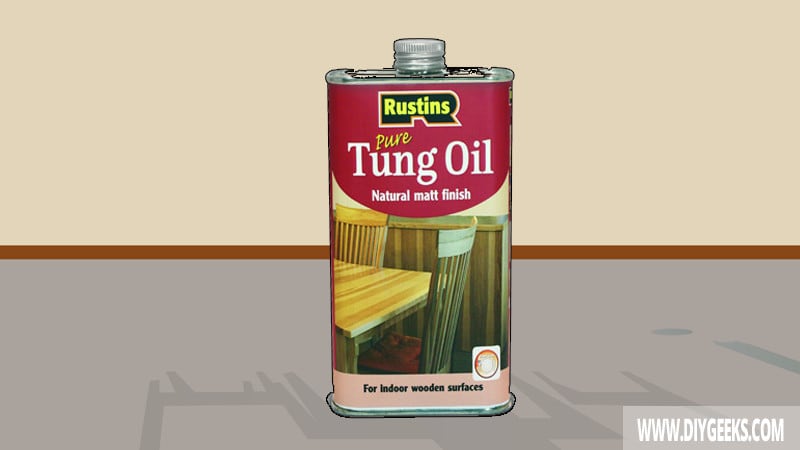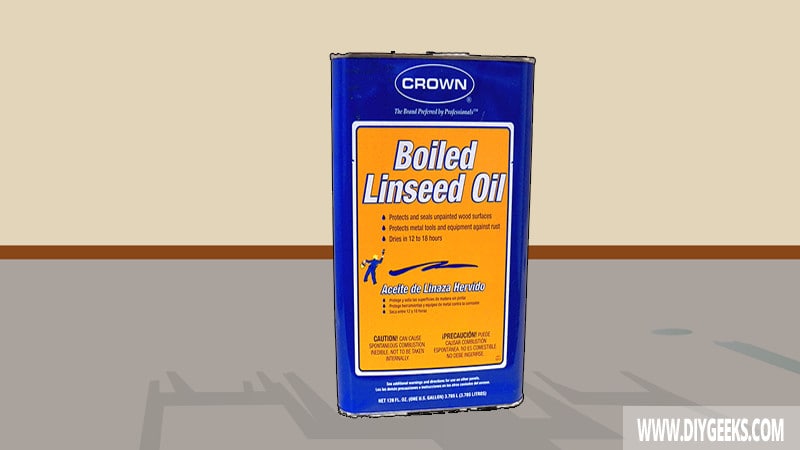Tung oil and Linseed oil are both natural wood oils obtained from two different plant seeds.
Tung oil is more water resistant, is easier to apply, and is easier to clean and maintain than Linseed Oil. Linseed oil has a thicker viscosity and better coverage than Tung oil.
What is Tung Oil?

Tung oil is a natural wood oil obtained by the Chinese Tung Tree seeds. It creates a protective finish with an amber-like color shade that protects surfaces from water, moisture, and scratches.
Tung oil penetrates the wood pores deeply and creates a solid durable film over the surface.
You can use Tung oil for the following things.
- On kitchen slabs, tabletops, and cabinets.
- To protect the wood from moisture and spills.
- To get an even glossy finish on the wood.
- Over outdoor furniture as it can withstand moisture.
What is Linseed Oil?

Linseed oil is a natural drying oil obtained from Flax plant seeds. It’s used as a wood finish and as an extra additive for oil-based paints.
Linseed oil creates a flexible glossy finish with a slightly yellow tint that protects surfaces from low water amounts. It has a thick viscosity that takes too long to dry, so it’s pre-thinned by many manufacturers.
Boiled Linseed oil is formulated with extra drying additives that make it dry faster than Raw Linseed oil.
Tung Oil vs Linseed Oil
The differences between Tung oil and Linseed oil are listed below.
Dry Time
Tung oil and Linseed oil have a similar dry time, both wood oils take around 24 hours to dry. However, in their raw state, Tung oil dries faster than Teak oil.
Thickness
Linseed oil has a thicker viscosity than Tung oil. In their raw state, Linseed oil is two times more thick than Tung oil.
Coverage
Linseed oil has better surface coverage than Tung oil as it has a thicker viscosity and covers more surface with fewer coats.
You need between 2-4 Boiled Linseed Oil coats, and between 2-6 Tung oil coats for proper coverage and durability.
Color
Tung oil forms a warm amber-like color shade finish that highlights the surface patterns and texture. Linseed oil forms a semi-transparent finish with a slight yellow tint.
Linseed oil finish is glossier and reflects light more than Tung oil finish.
Water-Resistance
Tung oil finish has better water resistance than Linseed oil as it can withstand water for longer.
Linseed oil has good water resistance but it can’t withstand water exposure for too long.
Application
Tung oil is easier to apply than Linseed oil as it has a thinner viscosity that doesn’t leave brush marks behind, and dries faster. Linseed oil has a thicker viscosity that is hard to control and takes longer to dry.
Cleaning and Maintenance
Tung oil is easier to clean and maintain than Linseed oil as its finish is more resistant to stains, moisture, and scratches, so you don’t need to clean it often.
Linseed oil has a softer finish that tends to attract more dust and requires more cleaning.


